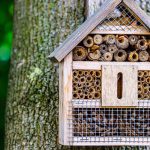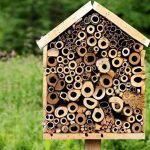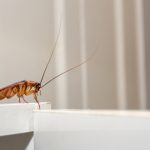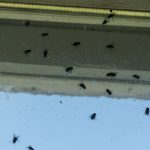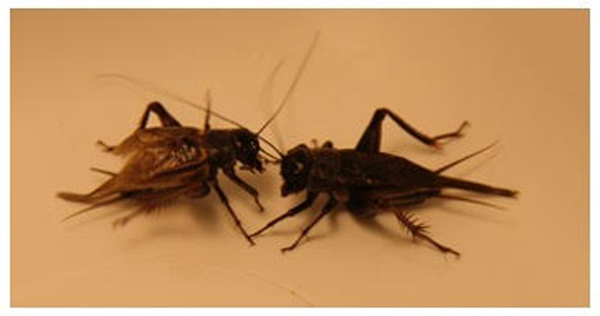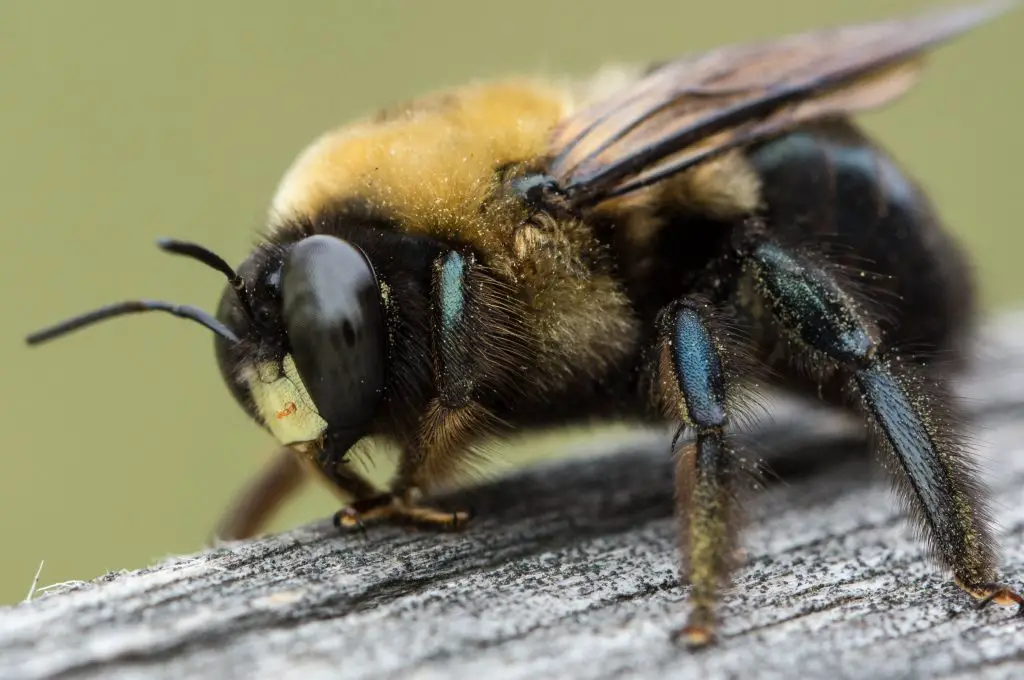Do You Know What Are The Best Bug Hotels in Organic Farming and Gardening in 2023?
There are a lot of people who are thinking what are the best bug hotels in organic farming and gardening in 2023. There are many types of bugs that can cause problems.
They have different kinds of nests or homes which they build. In addition to that, they also eat foods such as fruits and vegetables. Therefore, there are many things that you can do if you want.
If you are thinking about starting organic farming or gardening, then you need to know what to look for in a good organic hotel.
Definition of Bug Hotels and Their Purpose in Bug Hotels in Organic Farming and Gardening:

Bug hotels, also known as insect hotels, are structures designed to provide shelter and nesting sites for beneficial insects such as bees, ladybugs, and lacewings. These insects play a vital role in organic farming and gardening by providing natural pest control, pollination, and other ecosystem services.
A brief overview of the benefits of using Bug Hotels in Organic Farming and Gardening:
By providing a habitat for beneficial insects, bug hotels can help to increase the populations of these insects in the area, which in turn can help to control pest populations and improve pollination.
This can lead to healthier plants and a more productive garden or farm. Additionally, bug hotels are a simple and low-cost way to promote biodiversity and support the natural ecosystem.
How Bug Hotels Work?
Different types of bug hotels and their specific uses: Bug hotels can come in many different shapes and sizes, and can be made from a variety of materials such as bamboo, wood, straw, and even recycled materials.
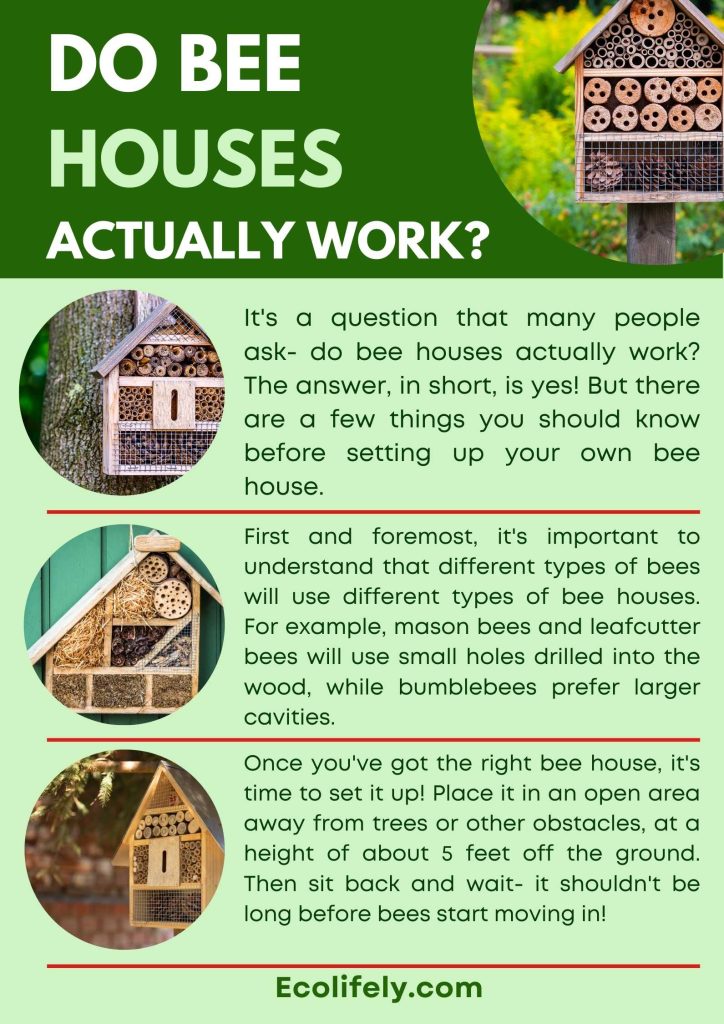
Some bug hotels are specifically designed to attract bees and other pollinators, while others are geared towards attracting ladybugs and lacewings for pest control.
Types of bugs that are attracted to bug hotels and their role in the ecosystem: Some common types of beneficial insects that are attracted to bug hotels include bees, ladybugs, lacewings, and parasitic wasps.
These insects all play important roles in the ecosystem, such as pollinating plants, controlling pests, and providing food for other animals.
By providing a habitat for these insects, bug hotels can help to promote biodiversity and support the natural ecosystem.
Building a Bug Hotel
Materials needed to construct a bug hotel: Basic materials needed to build a bug hotel include bamboo canes, straw, wood, leaves, and moss. In addition, you can use materials like egg cartons, coffee cups, and other recycled materials.
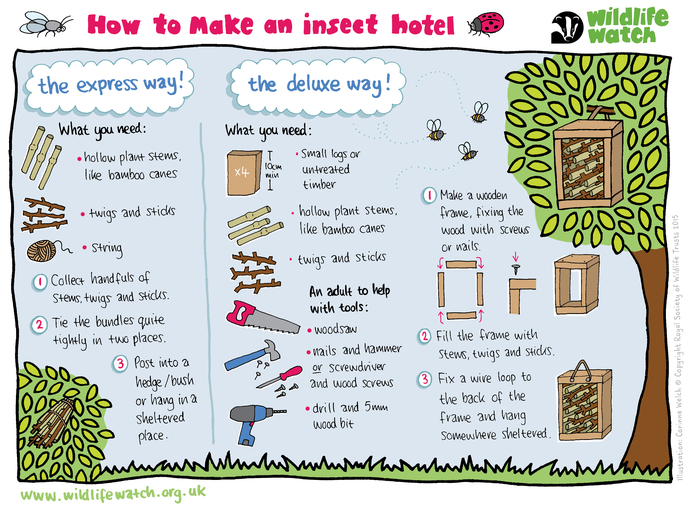
Step-by-step instructions for building a bug hotel: To build a simple bug hotel, you can stack bamboo canes or wooden blocks together and fill the spaces between them with straw, leaves, and moss. You can also use recycled materials like egg cartons or coffee cups to create different types of nesting sites for different types of insects.
1. Cut the top off of your container, if using a milk carton. Punch holes in the sides of your container, if using a plastic container. Make sure the holes are big enough for insects to fit through.
2. Fill the bottom of the container with straws, sticks, and leaves. Add moss and/or dirt on top.
3. Place rocks on top of the moss and/or dirt so that it is slightly elevated. This will help keep your insects warm in the winter months.
4. Cover the top of the container with a piece of cloth or burlap secured with a rubber band or string.
- Gather materials
- You will need a container of some sort (a milk carton or soda bottle works well), straws, sticks, leaves, and bits of bark or moss
- Make holes in your container
- Punch or cut small holes into the sides of your container
- These will be the entranceways for your insects
- Stuff your hotel with materials
- Pack the straws, sticks, leaves, and bark into the container
- Be sure to leave some spaces empty so insects can move around inside
- Hang or place your hotel in a suitable location
- Insect hotels are often hung on trees or fence posts, but you can also place them directly on the ground in a shady spot in your yard
Tips for maintaining and monitoring the bug hotel: Once your bug hotel is built, you should place it in a sunny spot in your garden or farm, and make sure it stays dry. It is important to monitor the bug hotel to make sure it is being used by beneficial insects, and to clean out any debris or mold that may accumulate over time.
Using Bug Hotels in Organic Farming and Gardening
Discussion of the different ways bug hotels can be used in organic farming and gardening
Bug hotels can be used in a variety of ways in organic farming and gardening, including pest control and pollination.
By providing a habitat for beneficial insects such as ladybugs and lacewings, bug hotels can help to control pest populations naturally, without the need for chemical pesticides.
Additionally, by providing a habitat for pollinators such as bees, bug hotels can help to improve pollination and increase the productivity of crops and plants.
Examples of specific crops and plants that can benefit from the use of bug hotels
Bug hotels can be beneficial for a wide variety of crops and plants, including fruits, vegetables, and flowers.
For example, bug hotels can help to control pests on crops such as tomatoes and peppers, and can improve pollination on crops such as strawberries and blueberries.
Additionally, bug hotels can be beneficial for flowering plants such as sunflowers and daisies, which rely on pollinators for seed production.
FAQs Of Best Bug Hotels in Organic Farming and Gardening!
1. What is a Bug Hotel?
- A bug hotel is a man-made structure created to provide shelter for various insects. It typically consists of natural materials like wood, bamboo, bricks, and straw.
2. Why are Bug Hotels Important in Organic Gardening?
- They encourage the presence of beneficial insects that help in pollination and natural pest control, reducing the need for chemical pesticides.
3. What Types of Insects Use Bug Hotels?
- Common residents include bees, ladybugs, lacewings, and various types of beetles.
4. How to Build a Bug Hotel?
- Use a variety of natural materials to create small, sheltered compartments. Ensure a mix of sizes and shapes to accommodate different species.
5. Where Should I Place a Bug Hotel?
- Position it in a sheltered spot, preferably near flowering plants. It should be kept dry and away from direct wind.
6. How Big Should a Bug Hotel Be?
- Sizes can vary. Smaller hotels can be beneficial for home gardens, while larger ones can support more species on farms.
7. Is Maintenance Required?
- Minimal. It’s essential to ensure the hotel remains dry and intact. Avoid using chemical sprays near it.
8. When is the Best Time to Set Up a Bug Hotel?
- Early spring or late winter is ideal, readying the hotel for the breeding season of many insects.
9. Can Bug Hotels Harbor Harmful Insects?
- Generally, they attract beneficial insects, but sometimes unwanted pests may inhabit them. Regular monitoring is recommended.
Conclusion
You’ll discover that a bug hotel is a place where you can enjoy the benefits of living among insects.
You’ll find that your skin won’t itch, there will be no stinging insects, and you’ll be able to enjoy the benefits of a completely insect-free environment.
You’ll love the fact that there are no risks associated with the bugs. There are also many health benefits to living among bugs.

“My name is Leo Jacob, and I hold a Bachelor of Science degree with Honors in Applied Environmental Science and Sustainability from the University of the West of Scotland. Since childhood, I’ve been passionate about living an eco-friendly life. After completing my studies, I dedicated myself to finding simple ways to lead a more environmentally conscious lifestyle. I launched ecolifely.com to share my educational background and practical experiences with everyone, hoping to inspire others to join me in creating a greener, more sustainable world.”
